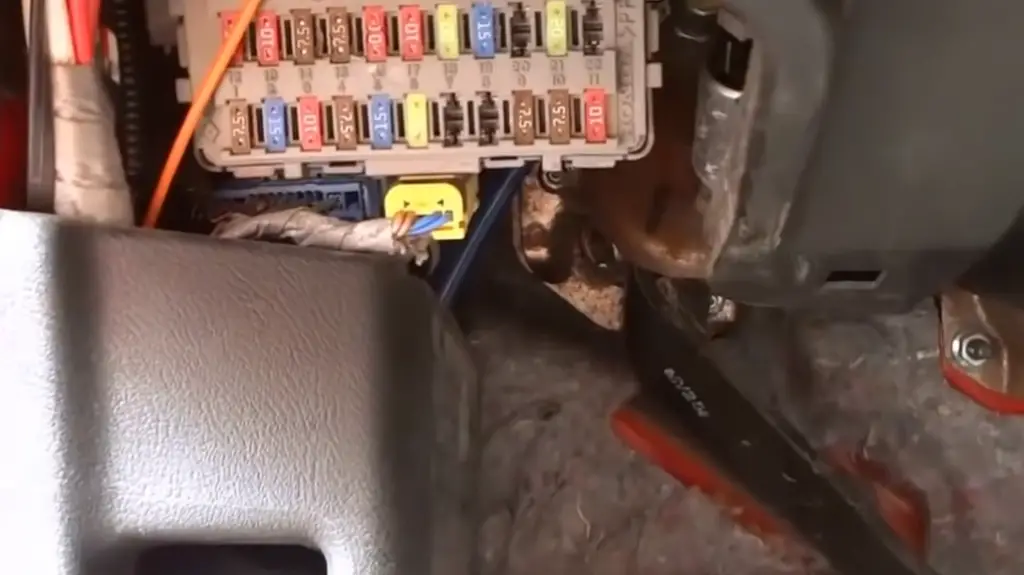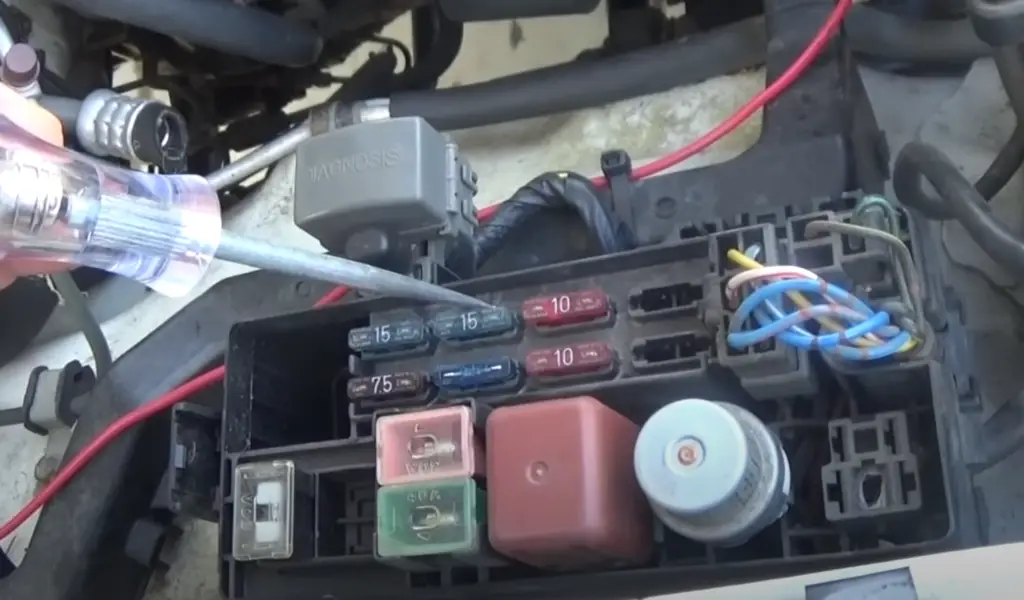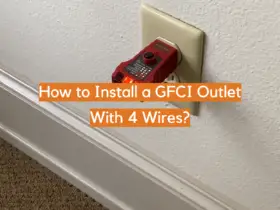Do you have a blown fuse in your home that you need to resolve? While it may be intimidating, fixing a blown fuse is actually fairly simple and can be accomplished with just a few tools. When something goes wrong in your home’s electrical system, the circuit breaker will typically trip and cause a power outage. The source of this issue could very well be due to an overloaded circuit or even an old, worn-out device plugged into the socket. More often than not though, it’s caused by a blown fuse—but don’t worry! Don’t let a blown fuse ruin your day! Follow this step-by-step guide to quickly and easily restore the power back into your home.
Why Do You Need an Electric Fuse?
Fuses are used in many household appliances such as microwaves and refrigerators, as well as larger items like air conditioners and industrial equipment. If you have blown fuses in your home, you will need to take steps to replace them with new ones. The following guide will show you how to safely replace a blown fuse and get your electrical system back up and running again. [1]

Reasons Why a Fuse Could Blow
Overloaded circuit
Should too much electricity flow through a circuit, it will cause the fuse to blow and interrupt power to that particular system. This could be because there are too many appliances or devices plugged into one outlet.
Faulty device
An appliance or device that has malfunctioned may be drawing more power than normal and consequently blowing the fuse.
Bad wiring
Poorly wired outlets, loose connections, exposed wires and other types of bad wiring can contribute to a blown fuse.
Lightning strikes
Lightning hitting near an electrical box can cause surges in electricity that can overload the circuit and blow a fuse.
To prevent any further damage to your home or possessions, it is important to recognize when a fuse has blown and take steps to fix it as soon as possible. Once the cause of the fuse blowing has been addressed, use safety precautions to replace the blown fuse and restore power to the circuit. [2]

Steps to Fix a Fuse in a Fuse Box
- Identify the blown fuse: The initial step is to pinpoint the malfunctioning fuse. This can be determined by looking at the panel of the fuse box and locating the thin metal strip that has melted or burned through.
- Cut off power supply to fuse box: Before touching any fuses it is essential to ensure that all electricity running through the system is disconnected, as there is a risk of electric shock if not done correctly. To ensure complete safety, shut off your primary circuit breaker or switchboard to cut the mains power supply from entering into your house.
- Replace blown fuse with new one: Once you have identified and disabled power supply to your house, you can take out the blown fuse and replace it with a new one. Make sure that you use a fuse of the same rating as the original, to ensure optimal performance.
- Test electrical appliances in home: Once you have replaced your fuse, you should test any electrical appliances in your home to make sure they are working correctly. If everything is OK then you should be good to go, but if there are any issues then you will need to investigate further into possible wiring or appliance faults.
- Turn on main power supply again: After testing all electrical appliances, turn back on your main switchboard or circuit breaker and check for any problems before turning back on individual switches for different rooms in your house. This will help make sure that all power is running through the home safely and effectively.
Following these steps should help you fix a blown fuse in your fuse box quickly and easily. If you are ever unsure or worried about anything then it is best to contact a professional electrician instead to ensure safety. [3]

How to Tell If A Fuse Has Blown?
When a circuit breaker or fuse has blown, it is important to know how to tell. Aside from the obvious signs such as a lack of power in an appliance or other device, there are several ways to tell if a fuse is blown.
The first way to check whether a fuse has blown is by visual inspection. Look carefully at the thin filament inside the glass window of the fuse. If this filament looks broken, melted or charred, then this serves as an indication that the fuse has been compromised and needs replacement.
Alternatively, use a multimeter on its continuity setting to see if electricity flows across the terminals when connected with one another; if not, then this could also be an indication that there is something wrong with the fuse.
Finally, one can also use an ohmmeter to test a circuit breaker or fuse in order to determine whether it has been compromised. This device measures the resistance of the elements within the fuse and will indicate if there is no electricity flowing through it then it could be indicative of a blown fuse. [4]
How to Replace a Blown Fuse?
- Unplug the appliance or turn off the power to the circuit that is connected to the blown fuse.
- Access the fuse box and identify which fuse needs to be replaced. The blown fuse will appear discolored or melted compared to other fuses in the box.
- Take out the old fuse using a pair of needle-nose pliers, being careful not to touch any other wires or fuses in the process.
- Purchase an appropriate replacement fuse from your local hardware store, making sure it’s rated for use with your particular appliance and circuit.
- Insert new fuse into place, securing it firmly with needle-nose pliers if necessary. Sometimes, you may need to use a screwdriver to secure the fuse in place.
- Turn on the power or plug in the appliance, and test it to make sure it’s working properly. If not, then inspect your work and double-check that you have inserted the correct size of fuse.
- Dispose of old fuses responsibly by placing them inside an approved hazardous waste container or taking them to a local recycling center.
- Consult a qualified electrician if you have any doubts about your own abilities when replacing a blown fuse; electrical work can be dangerous if done incorrectly!

Types of Fuses
Fuses come in different types and sizes depending on the amount of current they are designed to carry. Common household fuses include slow-blow, fast-acting, automotive, cartridge and mini (glass tube) fuses. Each type features a specific design that is tailored to its intended use.
Slow-blow fuses, for example, are designed to withstand short surges of electrical current while a fast-acting fuse will blow at much lower levels.
Automotive fuses feature an indicator window so you can quickly check if one has blown.
Cartridge and glass tube fuses also have indicator windows but usually require a special tool to access them.
No matter what type of fuse you need to fix or replace, it’s important to make sure you’re using the correct size and amperage for the application. Using a fuse with too low of an amperage can create a dangerous situation as it will not provide the necessary protection from surges in electrical current. On the other hand, using one that is too large can cause it to blow unnecessarily and could lead to equipment damage or even a fire if left unattended. [5]
Electrical Repair and Replacement Services
In many cases, a blown fuse may be caused by faulty wiring or an electrical problem beyond the homeowner’s ability to repair. In these instances, it is best to contact a professional electrician for help in identifying and repairing any underlying issues with your home’s wiring before attempting to replace the blown fuse.
Professional electricians can provide a range of services from minor repairs to full-scale electrical restorations. These services include replacing old wiring, inspecting lines for fraying and breakage, updating circuit panels and outlets, checking GFCI devices, installing dimmers and timers, as well as replacing switches and fixtures. If you’re dealing with frequent blown fuses or other more serious electrical problems in your home, consider calling an electrician to assess the situation.
Additionally, if you’re considering a larger-scale renovation or upgrade of your home’s electrical system, professional electricians can help in designing and executing these projects so that you get the best possible results with minimal disruption to your daily life. Experienced electricians know how to make sure all your wiring is up-to-code and that everything is properly installed for maximum efficiency, safety, and reliability.

Whether you need to repair an existing problem or upgrade your entire electrical system, it’s important to rely on qualified professionals who are familiar with local codes and regulations. They will be able to provide quality service quickly and efficiently, ensuring that any problems are thoroughly addressed with reliable solutions. So don’t attempt to fix a blown fuse on your own—call an electrician for the best results!
Cost to Fix a Blown Fuse
When it comes to figuring out the cost of fixing a blown fuse, there are a few factors that come into play. First, the size and type of the fuse that needs to be replaced will affect the cost. If you need to replace an old-fashioned ceramic fuse, for example, you may have to spend more than if you were replacing a modern circuit breaker because they are harder to find and often more expensive. The amount of time it takes an electrician or handyman to make the repair can also impact your total costs.
You should also consider whether or not you’ll need additional materials such as wiring or other components. If so, these could add even more expenses to your bill.
Finally, depending on where you live and the availability of qualified electricians, your cost could be higher or lower than the national average.
In general, however, the cost to fix a blown fuse can range anywhere between $50-$500+ depending on the specifics of your situation. It’s always best to get an estimate before any work begins so you know exactly how much it will cost you. [6]

FAQ
What is the proper way to fix a blown fuse?
The proper way to fix a blown fuse is to replace it with one of the same amperage rating. First, you will need to turn off the power at the circuit breaker box. Then use a screwdriver or other tool to remove the fuse. Replace it with an identical fuse and ensure that it is securely in place before turning on the power again. Always be sure to read labels and follow safety instructions when working around electricity.
Finally, if the problem persists even after replacing the fuse, contact a qualified electrician for further advice or assistance.
How do you know if you blew a fuse?
If you experience any of the following, then it is a strong indication that you have blown a fuse: lights suddenly going out, appliances not turning on or working properly, flickering or buzzing sounds coming from outlets. Additionally, if your circuit breaker trips and shuts off power to your home or specific area of the house, then this could also be an indicator that there is a problem with one of your fuses. If in doubt, contact a qualified electrician for assistance.
Are all fuses the same?
No, fuses come in different amperage ratings and sizes. It’s important to replace a blown fuse with one that matches its rating as using an incorrect size may cause further damage and create an unsafe situation. Always double-check the label on the existing fuse before purchasing a new one. If unsure, contact a qualified electrician for assistance.
How much does it cost to fix a blown fuse?
The cost of repairing a blown fuse depends on the complexity of the problem, as well as whether you choose to do the repair yourself or hire a professional electrician. DIY repairs typically involve replacing the faulty fuse with an identical one that has been rated for the same amperage and voltage, which can cost as little as $2-$3. If you decide to enlist the help of a certified electrician, labor costs will be significantly higher and could range from $50 to $100 depending on your area and local rates. In addition to labor fees, you may also have other associated costs including any additional materials such as wiring or new fuses that are needed for the repair. It is recommended that you speak directly with your local electrician for an accurate estimate of repair costs.
Can a blown fuse be repaired?
In most cases, a blown fuse cannot be repaired. Instead, the faulty fuse must be replaced with one of the same size and rating that is designed to handle its intended amperage and voltage load. It is important to never attempt to repair a blown or damaged fuse by adding tape or any other material as this could compromise the integrity of your electrical system and lead to dangerous outcomes.
What should you do if a fuse keeps blowing?
If you find that a specific fuse keeps blowing, it’s likely due to an underlying issue in your electrical system such as faulty wiring or overloaded circuits. In these cases, it is best to turn off the power and contact a licensed electrician to investigate and diagnose the issue. Ignoring or attempting to repair the fuse without properly diagnosing the underlying cause can lead to further damage and potential hazardous outcomes.
Is a blown fuse serious?
Yes, a blown fuse is serious. A blown fuse means that the electrical circuit has been overloaded and needs to be fixed in order for it to work properly again. If left unfixed, this can cause further damage to your electrical system or worse – create a fire hazard. For these reasons, it’s important not to ignore a blown fuse and address the issue as soon as possible by fixing the blown fuse or replacing it with a new one.
Can the fuse be reused after it blows?
No, the fuse should not be reused once it has blown. A blown fuse needs to be replaced with a new one in order to ensure that the circuit does not get overloaded again and cause further damage or create a fire hazard. It is best to replace the old fuse with an identical replacement of the same amperage as the original fuse.
Useful Video: How to Fix a Blown Fuse with a Chewing Gum Wrapper
Conclusion
In conclusion, knowing how to fix a blown fuse is an essential skill for any homeowner or apartment dweller. It is important to remember that fuses are designed to protect your electrical circuits from damage caused by overloads and short circuits. While it may seem intimidating at first, the steps required to replace a fuse are relatively straightforward. With the right tools and guidance, you can troubleshoot and repair a blown fuse quickly and easily. If you have any questions or concerns when attempting this task, make sure to contact a professional electrician for assistance. Taking these safety precautions will help ensure that your home’s electrical system remains safe and functioning properly for years to come. In addition to providing peace of mind, replacing a blown fuse on your own can save you time and money.
Now that you know how to fix a blown fuse, you are prepared for any future electrical emergencies. Being able to troubleshoot and repair your home’s electrical system yourself is a useful skill that will benefit you in the long run. With this knowledge and the necessary tools, you now have the power to tackle any issues related to your home’s electrical system with confidence.
So don’t be afraid to get started – start fixing those blown fuses today! You never know when an emergency might arise, so being prepared is key. Good luck!
References
- https://www.mmcomfortsystems.com/blog/news/maintenance/what-do-you-do-when-you-blow-a-fuse/
- https://www.homeserve.com/en-us/blog/how-to/fix-blown-fuse/
- https://www.ahs.com/home-matters/repair-maintenance/how-to-fix-blown-fuse/
- https://housemethod.com/maintenance/blown-fuse/
- https://solvitnow.com/blog/how-to-deal-with-a-blown-fuse/













Leave a Reply